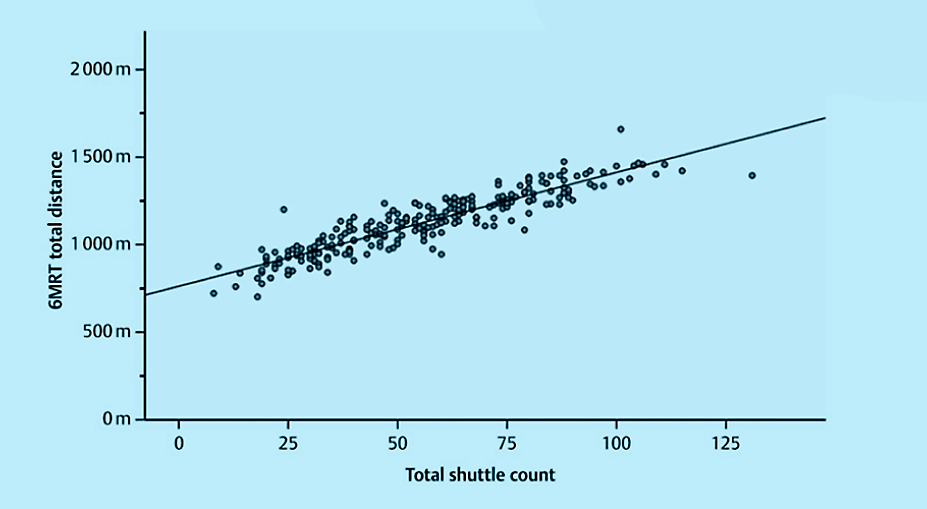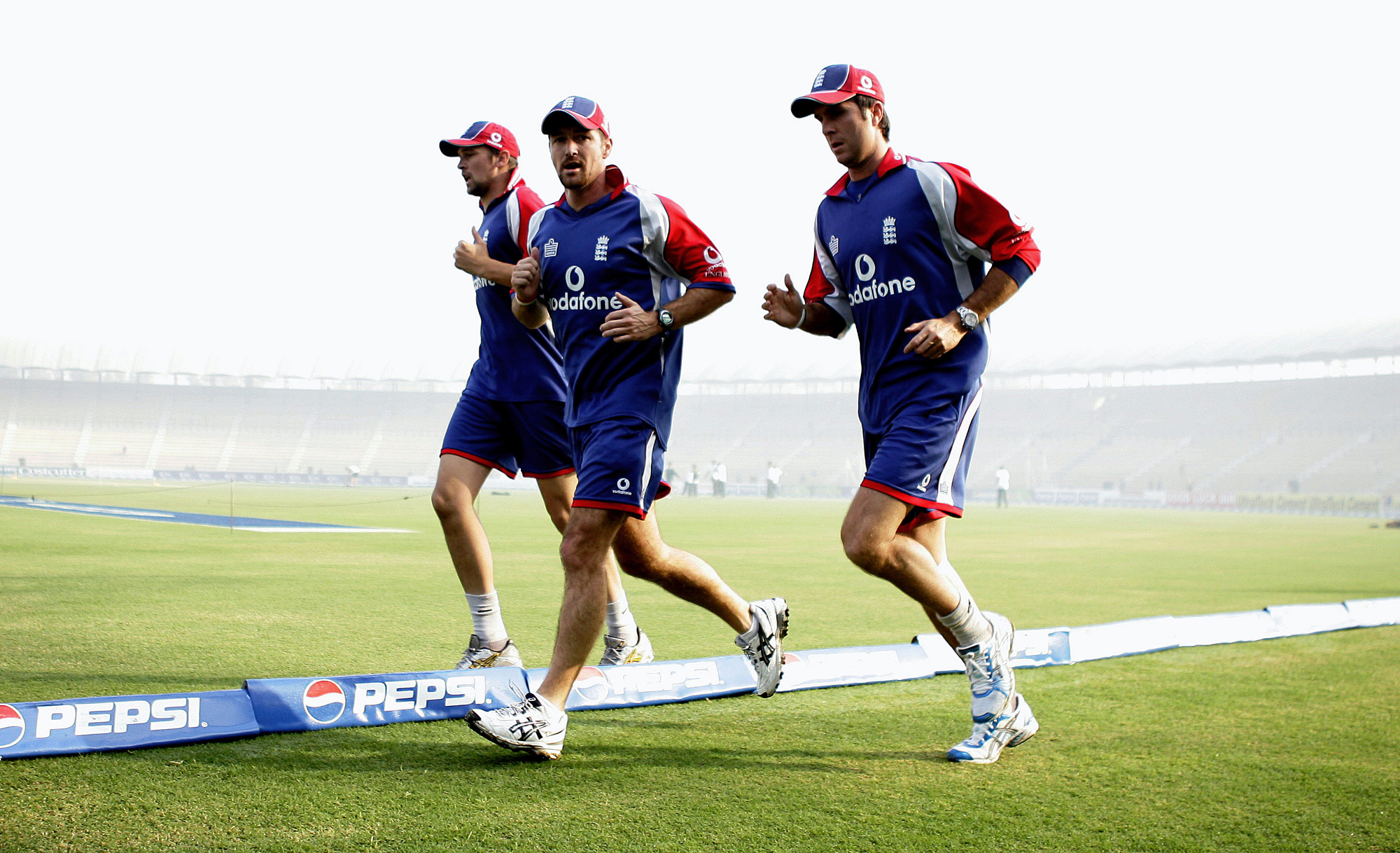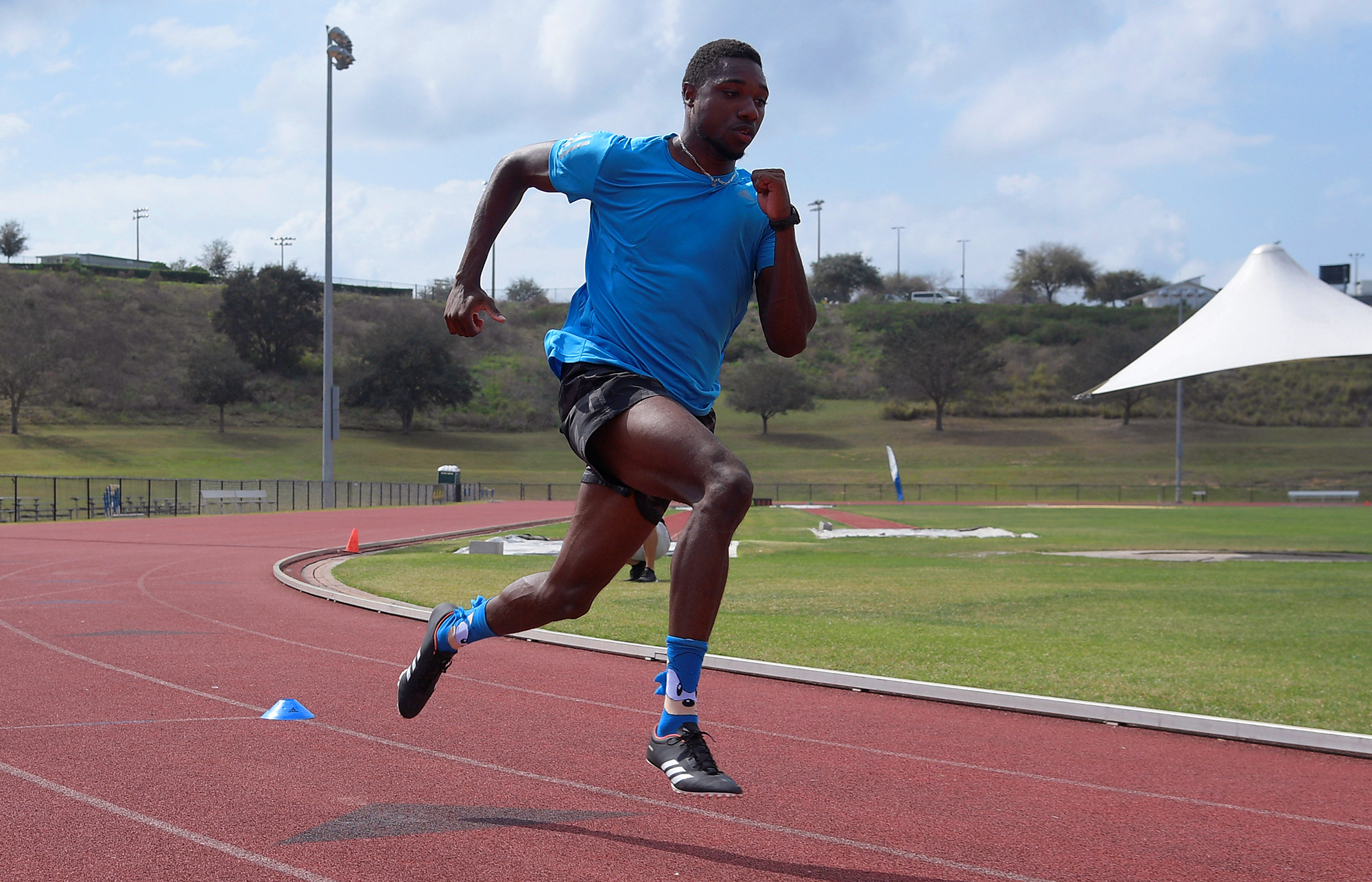The test of time: self-monitoring for runners
SPB looks at new research on fitness testing, and explains why and how a quick and simple 6-minute test can help runners monitor their progress – or lack of it!
If you want to know where you’re heading, you need to know where you’re starting from. You might think that this is a self-evident statement, but you’d be amazed just how many (especially recreational) runners blunder from workout to workout, without even the vaguest idea of how effective their training actually is. While simply getting out and running regularly is enough to build an initial level of fitness for novices, it won’t be enough to develop that fitness and improve performance in the longer term.
Measuring fitness
The ultimate way of monitoring training effectiveness and the gains in endurance performance produced is to race regularly, or perform time trials against the clock over a set distance. However, many recreational athletes do not compete regularly, and instead focus on one or two big events each year. In addition, few athletes race during the pre-season preparatory months (late winter and spring), instead preferring to focus on building a solid endurance base first. And even when athletes do compete in regular races, tracking performance is tricky unless all races are run in identical conditions on identical courses against identical opponents and at the same time of day (because your body’s circadian rhythm significantly impacts performance depending on the time of the day – read more here).
What is really needed is a way to measure fitness in a way that is easy and simple, yet yields meaningful levels of accuracy, allowing you to discover whether your fitness is increasing, has reached a plateau, or is even decreasing! For runners and other endurance athletes whose performance depends mainly on aerobic (or cardiovascular) fitness, this is easier said than done.
Where very accurate measurements are required (eg in elite athletes), laboratory settings and skilled technicians are needed – something that is hard to come by outside of research or national sport settings(1). In a lab, it’s possible to directly measure maximum oxygen uptake (VO2max – see box 1) and blood levels of lactate, which gives a handle on not just how much oxygen can be taken in and utilized during exercise, but also on what percentage of that figure can be sustained over longer distances(2). However, while athletes performing at the very highest level may require that nth degree of accuracy, most amateur athletes don’t. And that’s good news; not only is lab testing expensive and time consuming, it’s possible - with the simple application of a few principles from exercise physiology - to get a reasonably good idea of aerobic fitness levels and to track them over time.
Box 1: Understanding VO2max and oxygen uptake
At high workloads, muscles need large amounts of energy and therefore lots of oxygen. As the exercise intensity is further increased, there comes a point when the oxygen transport system is working flat out – it simply cannot pump any extra oxygen around to the working muscles. This is known as maximum aerobic capacity or maximum oxygen uptake (VO2max) and as you approach this point, you’ll reach the limit of your sustained power output. All other things being equal, the higher your VO2max, the faster you’ll be able to row, run, swim, cycle etc. for long periods of time without fatigue.
VO2max can be expressed in two ways:
• Absolute VO2max – this expresses the maximum amount of oxygen in litres you can absorb, transport and deliver to working muscles each minute. The units are litres of oxygen per minute (L/min).
• Relative VO2max – this is a more useful expression of aerobic capacity, because it takes into account your body weight and expresses how much oxygen you can absorb, transport and deliver to each kilogram of your body per minute – aerobic power-to-weight ratio (read more about power-to-weight ratio in this article).
Absolute oxygen uptake figure in litres per minute is less important that the aerobic power-to-weight ratio – ie how much oxygen can be pumped to each kilo of body weight per minute. This relative VO2max figure is a much better indicator of an endurance athlete’s ability to sustain endurance activities than is absolute VO2max. The units of relative VO2max are millilitres of oxygen per kilo of body weight per minute (mls/kg/min).
Practical and simple testing for runners
When testing in a sports-physiology lab is not practical or affordable, what other options do runners have? As we hinted above, there are some well-recognized and documented simple field tests that be used to assess running fitness and performance. Commonly used field tests include(3-5):
· Pulse-based step tests, where heart rate recovery is measured following a bout of steps ups using validated protocols for step height and step frequency – see this article.
· Distance running tests (usually over 1km or 3km.
· Timing walking tests (maximum distance covered) – eg for 6 minutes (mostly used for those with low fitness levels and/or chronic health conditions).
· Timed running tests (maximum distance covered) – eg for 12 minutes.
While these tests can provide pretty decent guide to overall aerobic fitness, the timed running test over 12 minutes (also known as the ‘Cooper Test’) is one of the best validated, and one that has undergone repeated refinement over many decades(6).
The 20-metre shuttle test
An even more widely used and highly validated field test is the 20-metre shuttle run test (sometimes called ‘bleep test’), which is used all over the world(7-9). In this test, subjects run back and forth on a flat 20meter course (marked by cones) and must cover the 20-metre distance between the cones within the time a sound (bleep) signal is emitted from a pre-recorded tape/CD/MP3 playing device. The frequency of the bleeps is increased (from a start speed of 8.5kmh) so that 0.5kmh must be added to the average running speed each minute in order to keep up. When the subject can no longer keep up with the pace, the last stage number successfully completed is used to predict VO2max.
While the 20-metre shuttle test is highly regarded, it has some limitations in terms of practicality. Firstly it requires a perfectly flat surface, and even then, the results can be affected by the nature of that surface (for example, a hard surface like concrete will give better results than a soft grass surface(10)). Secondly, it requires cones, a distance measuring device and some kind of sound replay equipment. Thirdly, it requires a maximal effort and quite high running speeds in the later stages, with constant accelerations and decelerations. This can make it hard going for runners who are prone to injury and create quite a fair bit of delayed onset muscle soreness in those who are unaccustomed!
New research
Are there any other methods of testing aerobic fitness that are quick and easy to perform, but which can provide comparable accuracy to the 20-metre shuttle test? The good news is that new research has revisited one of the simplest testing protocols of all – the 6-minute run test. While this test combines ease of execution and very manageable athletic demand, it’s accuracy to date has only be robustly established for children and adolescents(4). But now, new research published in the International Journal of Sports Medicine has revisited this easy-to-perform test to see if it can be cross-referenced to the 20-metre shuttle test, thereby providing a high degree of accuracy for minimal time and effort expenditure(11).
In this study, 250 healthy individuals (116 women and 134 men) aged 18 to 65 years and with a wide range of physical activity levels were recruited. Each participant completed both the 6-minute run test and the shuttle run test; both tests were performed on the same day but in a randomized order. A minimum of two hours recovery was specified between test #1 and test#2 to ensure the former did not influence the outcome of the latter. Criteria for performing these tests were as follows:
· The 6-minute run test took place on a 54-meter track encircling a volleyball court in a sports hall, which had to be run as many times as possible in six minutes. The remaining time was announced after three and five minutes, concluding with a final 10-second countdown. Afterwards each runner had to stop on the spot. Total distance was calculated from laps completed plus the distance covered in the final lap.
· The shuttle run test was performed on a 20-meter track between two baselines as described by Léger and Lambert in this study. This distance had to be run as many times as possible at a speed indicated by audio signals. The track included two tolerance zones every two meters in front of the baselines. Each completed distance represented one shuttle. The number of shuttles per level increased with the level, as each level lasted one minute. The initial speed was 8kmh. In the second level the speed increased to 9.0kmh and then by 0.5 km/h per level. The first audio signal indicated the time at which the runners had to commence to run and the following one to reach the baseline. If a participant failed to reach the tolerance zone three times when the audio signal sounded, the participant’s run was terminated.
Following the tests, the data from each and every participant was analysed – specifically, the distance covered in the 6-minute run was logged against the level reached in the shuttle run for that individual. The researchers then looked to see how closely correlated the 6-minute distances were with the shuttle run levels attained. In other words, did the 6-minute distance covered mirror the shuttle run performance? Intuitively, you would expect runners who could cover more distance in 6 minutes to be fitter and faster, and therefore reach a higher level in the shuttle run test. But was this true for all levels of fitness, and was the relationship close enough to enable 6-minute run distances to accurately predict shuttle run performance?
What they found
The key finding was that 6-minute run distances were very highly correlated with the level attained in the shuttle run test. This was true regardless of the age, sex or anthropometric characteristics of the individual. When the researchers developed a plot showing 6-minute distance vs. shuttle run level (see figure 1), the relationship was linear throughout and the relationship was so tight that the probability error was less than 0.001 (ie less than one in a thousand that these results arose as a fluke).
Figure 1: Linear plot of 6-minute distance against shuttles completed

The researchers also looked to see whether the participants’ age, weight and waist circumference had any impact on the expected result in the 6-minute run test (ie deviations away from the regression line). They found that although these parameters had a slight effect (ie might produce slightly skewed results), this effect was no different from that seen in the shuttle run test. In other words, the six minute run test and the shuttle run tests were equally accurate in this respect.
Practical implications for athletes
They key take home message of this study is that if you want to track your running fitness, the very simple and quick 6-minute run test is an equally valid measurement tool compared to the more complicated and longer shuttle run test. This is great news for runners who want to monitor their progress and adapt/step up their training as needed because the only requirements are a watch with a timer and a method of accurately measuring distance covered.
If it’s the exact distance traveled you want to know (in order to determine fitness – see below), the most accurate method will be repeat laps of a circuit of known distance, for example in sports hall, round a running track etc. However, as it’s unlikely you’ll finish exactly at the end of a lap, you’ll need the ability to measure the distance of the part lap you cover when the 6-minute mark is reached. This will require some kind of measuring device (something like a construction worker’s tape measure!).
GPS tracking can also be used and is a very appealing option. Yes, there are often measuring errors when using these devices (see this article) but if you are using the 6-minute run test as progress/comparison tool, what really matters is whether you are running further (or not) in each testing session. You’ll know that of course because all you need to do is to record where you got up to in the last testing session! In fact, if it’s just a comparative measure you want (to a previous test), you don’t even need to know the actual distance. You can just run for 6 minutes along a straight road and mark where you finish.
The big caveat here is that you need to use a flat route with an even surface because this test has not been validated on varying gradients or surfaces. It’s also worth mentioning that for a meaningful and accurate comparison, you should perform your 6-minute run tests at the same time of day and when you’re fresh. Ideally weather conditions should also be similar and preferably dry, not windy and not icy underfoot.
Measuring absolute fitness (VO2max)
If the shuttle run test can be used to reliably predict absolute levels of fitness, can the 6-minute run test do the same? Given the extremely tight correlation between the two, the answer is yes – so long as you can accurately measure the distance covered in your 6-minute run (see above). All you need to do is use the line plot in figure 1 above to see what your 6-minute distance corresponds to in terms of shuttle runs completed.
So, suppose you cover 1500m in 6 minutes. This is equivalent to 115 shuttles. Since each shuttle = 20m covered, that means you have covered 115 x 20m = 2,300m in total. We can now apply the conversion formula developed by Flouris, A D; Metsios, G S; Koutedakis in their paper titled: "Enhancing the efficacy of the 20 m multistage shuttle run test"(12). This formula states that:
VO2max = (maximal attained speed in kmh x 6.55) – 35.8
However, rather than you having to calculate this final speed in your theoretical shuttle run test, we can turn to pre-prepared tables to read off the answer. The website ‘BeepTestGuide.com’ has an excellent conversion table which can be accessed here. In this table, the column you want is the middle one – ie ‘total distance run’. In summary:
· Perform your 6-minute run test and record the distance.
· Use this distance to find out the equivalent number of shuttles by looking at figure 1 above.
· Multiply the number of shuttles by 20 to get total shuttle run distance equivalent.
· Now read off your predicted/estimated VO2max using the middle column (distance) in the BeepTestGuide.com table.
Remember, if you want to make sure you’re heading in the right direction, you need to know where you’re starting from!
References
1. 1. Rev Paul Pediatr 2017; 35: 222-233
2. 2. Meas Phys Educ Exerc Sci. 2009;13:1–12
3. 3. J Clin Med 2021; 10: 3743
4. 4. Deutsche Zeitschrift für Sportmedizin 2011; 62: 351-355
5. 5. B ös K. Handbuch motorische Tests: sportmotorische Tests, motorische Funktionstests, Fragebögen zur körperlich-sportlichen Aktivität und sportpsychologische Diagnoseverfahren. Goettingen: Hogrefe Verlag; 2017
6. 6. Biol Sport. 2015 Mar;32(1):59-63
7. 7. J Sports Sci Med 2015; 14: 536-547
8. 8.Can J Sport Sci. 1989 Mar;14(1):21-6
9. 9. Adam C. Eurofit: handbook for the Eurofit tests of physical fitness. Rome: Italian National Olympic Committee. Central Direction for Sport’s Technical Activities Documentation and Information Division; 1988
10. 10. PLoS One. 2021; 16(1): e0228682
11. 11. Int J Sports Med. 2023 Dec 19. doi: 10.1055/a-2206-5291. Online ahead of print
12. 12. Br J Sports Med 2005. 39 (3): 166–170
Newsletter Sign Up
Testimonials
Dr. Alexandra Fandetti-Robin, Back & Body Chiropractic
Elspeth Cowell MSCh DpodM SRCh HCPC reg
William Hunter, Nuffield Health
Newsletter Sign Up
Coaches Testimonials
Dr. Alexandra Fandetti-Robin, Back & Body Chiropractic
Elspeth Cowell MSCh DpodM SRCh HCPC reg
William Hunter, Nuffield Health
Keep up with latest sports science research and apply it to maximize performance
Today you have the chance to join a group of athletes, and sports coaches/trainers who all have something special in common...
They use the latest research to improve performance for themselves and their clients - both athletes and sports teams - with help from global specialists in the fields of sports science, sports medicine and sports psychology.
They do this by reading Sports Performance Bulletin, an easy-to-digest but serious-minded journal dedicated to high performance sports. SPB offers a wealth of information and insight into the latest research, in an easily-accessible and understood format, along with a wealth of practical recommendations.
*includes 3 coaching manuals
Get Inspired
All the latest techniques and approaches
Sports Performance Bulletin helps dedicated endurance athletes improve their performance. Sense-checking the latest sports science research, and sourcing evidence and case studies to support findings, Sports Performance Bulletin turns proven insights into easily digestible practical advice. Supporting athletes, coaches and professionals who wish to ensure their guidance and programmes are kept right up to date and based on credible science.











